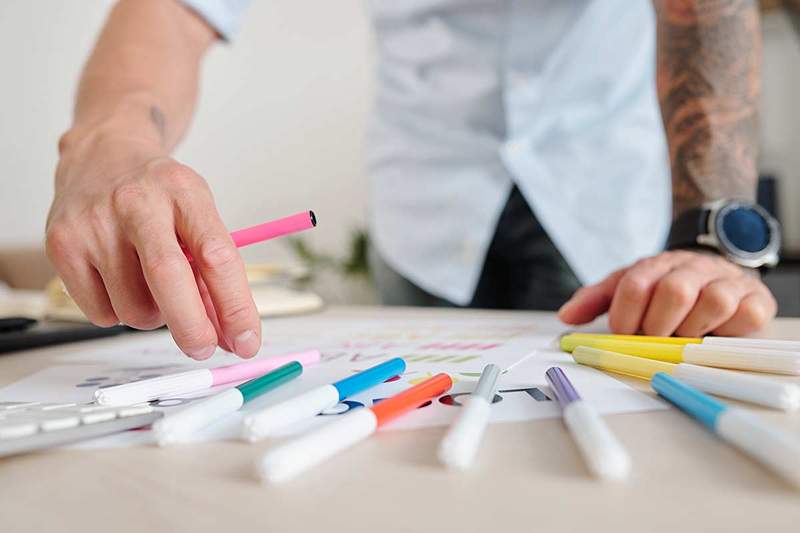Marketing color psychology

- 4075
- 986
- Austin Stokes
Marketing color psychology shows how colors have the ability to transmit certain emotions.
Those who are dedicated to marketing and advertising give a lot of relevance to color psychology, because, this, being a branch of psychology, is oriented towards the study of emotions that colors make people feel.
Following this study, Each color is associated with a meaning, depending on the effects caused by the person's perception and behavior.
Marketing color psychology
Although many people pass it unnoticed, the truth is that colors have a big impact on human life.
Day by day we receive stimuli of different colors and these, in a way, influence our decisions. That is why color psychology in marketing every day wins more followers.
Well, there are many experts in trying to discover, precisely, how or to what extent the colors influence decision making, especially when making a purchase, since, despite the fact that many times it happens as a unconscious process, Colors produce a variety of sensations.
According to a study by Andrew J. Elliot, about colors and their psychological functions, certain colors, such as red and yellow, produce systematic physiological reactions that manifest in emotional experience and cognitive orientation.
Hence, in marketing the effects produced.
At this point it is that publicists resort to psychological studies of color to cause different sensations and feelings in users, thus generating a greater impact.
In the case of logos, for example, Colors are fundamental for companies to transmit the message they want, Well, this is part of nonverbal communication.
When users observe colors, they generate different feelings, which range from joy to calm, the desire for power, strength or sadness.

Meaning of colors
Within the psychology of color in marketing, each of the colors transmit a certain sensation, so it is considered that colors have a meaning.
The meaning of colors is as follows:
- The Red: This primary color has the power to stimulate appetite and evoke intense emotions, it is synonymous with passion. In marketing, it is considered as a color capable of accelerating heart rate, which is why it is very often used in restaurants, because people feel urged to buy.
- The yellow: It is another primary color that causes living emotions, such as those of affection and joy, however, prolonged exposure to it can cause ocular tension and fatigue. In marketing it is known that this color promotes communication, so it is preferably used in the showcases, since it transmits optimism, clarity and has a youthful touch.
- The blue: This primary color is associated with calm, with water; It is usually one of the colors that men prefer the most. Blue reduces appetite, transmits serenity and increases productivity. In companies it is widely used, since it is not invasive and projects the brands.
- The Orange: makes people feel enthusiasm and emotion, although it is taken as a precautionary signal. In marketing, This color is used to encourage purchase, subscription, sales or call for users to perform certain action. With this tone, the brand is projected in a cheerful and friendly way, although impulsive buyers are the first who respond to the presence of orange.
- The green: To this color, although it is associated with nature, it is also related to money, prosperity and growth. In marketing color psychology it is used for users to relax in stores.
- The Violet: is associated with success, wealth and wisdom. In marketing, this color is widely used to calm, as well as It is used quite a lot in anti-aging products or others in the beauty sector.
These are the most used colors within the psychology of color in marketing, then, others such as gray or brown, are associated with laziness, the outdated, or boring, feelings that are unable to the majority.
In addition to marketing, color psychology begins to gain relevance to other areas, such as design, fashion, art and architecture, because, it is already well known today that colors have strength to evoke sensations or awaken feelings.
Color psychology and chromotherapy colors function
Bibliography
- Barbosa, m. F. EITHER., & Sánchez, C. TO. P. (2017). Color psychology: strategies immersed in the service of advertising agencies. Depth Scientific Magazine Building Future, 7(7), 39-45.
- Cañellas, a. M. (1979). Color psychology. Main, 35-37.
- Elliot, a. J. (2015). Color and Psychological Functioning: A Review of Theoretical and Empirical Work. Frontiers in Psychology, 6, 368.
- Heller, e. (2004). Color psychology. How colors act on feelings and reason. Barcelona: Gustavo Gili.

